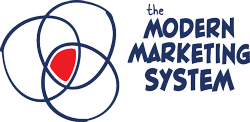Landing Page Framework
This mini-masterclass explains how to create more effective lead-generating landing pages.
It’s not meant to be an exhaustive template you can follow. Instead, it’s a framework built from questions we ask ourselves and principles we rely on before we write.
Let’s start with some context.
Lead-generating landing pages are one of the most important pieces of marketing content we create — and they’re often the most misunderstood.
Conventional wisdom (and countless internet marketing courses) say we should offer an ‘ethical bribe’ in exchange for an email address, persuading prospects with big promises (and blind curiosity) to allow us into their inboxes.
In this view of the world, cost-per-lead is the magic number to watch, followed closely by opt-in rates. The primary goal is generating high volumes of cheap-as-possible leads that can be fed into an ’email gauntlet’ until those leads buy or unsubscribe.
We believe there’s a (much!) better way.
Instead of creating an ‘attention transaction,’ where the subtext is “give me your email and I’ll give you a free prize,” we focus on identifying, describing, and dimensionalizing the value we can create for someone so that s/he is compelled to take a step closer to us.
We deliberately filter out the wrong prospects early in the process because we know that lead quality — not lead quantity — matters most when we look at our business as an infinite game.
We also recognize that the most significant financial opportunity is found by playing the long game because only a small fraction of customers convert in the first 90 days.
Legendary marketer Dean Jackson analyzed his clients’ (extensive) data and found that 85% of leads who became customers converted between months four and eighteen.
That means there’s more than 4x the financial opportunity in your audience after 90 days!
We’ve seen this same dynamic play out over and over again in our own business, and in the hundreds of clients we’ve worked with over more than two decades.
Recognizing these hidden truths of lead generation, we create landing pages that pull the right prospects forward in a way that our eventual call to action is the next logical step in their journey (and it’s a step they want to take without any artificial incentive).
The question, of course, is how do we do that?
We’ve learned (often through trial and plenty of error) that the fastest route to progress is a simple framework combined with a bias for action.
Here’s a three-part framework you can use to improve your lead-generating landing pages. Work through the three parts in the order they’re listed. We’ve included three prompts for each part.
Don’t over-intellectualize the work. Just answer the questions, do the work, and see where it leads.
Here’s the framework:
- The Setup.
- The Conclusion.
- The Journey.
Yes, we know that looks like it’s out of order. Trust us (we’re doctors) — the order will make sense when you do the work.
Let’s start with The Setup…
Context matters. Knowing who you’re writing for, with precision and clarity, is very important. Before you write a single word, answer these three questions:
- Who is the landing page for? (Describe the ideal prospect in detail.)
- What do they want and care about? (Think broadly, and include functional, social, and emotional needs.)
- How urgent is their desire / need for the value you have to offer? Did they find you by searching for a specific problem they want solved today, or did they ‘bump into you’ from a Facebook ad (or something similar)?
Once we’ve established context, we need to skip ahead and identify exactly what we want our ideal prospects to do next (for example: opt-in to an email list, complete an application form, register for a webinar, schedule a call, etc.).
We need to know where we’re going before we make the plan to take our prospects there step by step.
To establish The Conclusion, answer these three questions:
- What does someone need to do next? (For example: opt-in.)
- What is the primary benefit they’ll get by taking that action? (This benefit should be related directly to the needs you identified in The Setup.)
- What overall belief do they need to have accepted and internalized before they take that next step? (This is your marketing thesis / controlling idea.)
Finally, we’ll use logic and emotion to ‘make our case.’
We already know what we want our prospect to DO next. And we know what our prospects need to BELIEVE in order for that next step to be obvious and desirable.
Now we need to take them there.
Here are a few guidelines for The Journey:
- Identify three ideas that support your marketing thesis and arrange those so that one flows logically and naturally to the next.
- Include stories to add emotional texture (yours, people who you have helped, or other stories that are relevant).
- Think like a screenwriter instead of a copywriter — show, don’t tell whenever possible. (Imagine you’re writing scenes — who is there, what are they doing, what are they saying?)
Don’t overthink this exercise. Ask and answer the prompts and write something start to finish.
Pro tip: after you’ve written a draft landing page, use the same framework as a diagnostic tool for editing. In particular, focus on the way your writing ‘flows’ from one point to the next.
If you’ve done your work well, the opt-in should feel like a natural next step for your ideal prospect.
Good luck!
—Shawn & André

